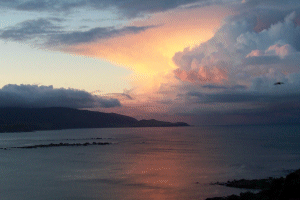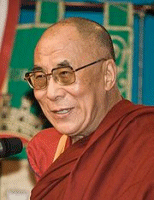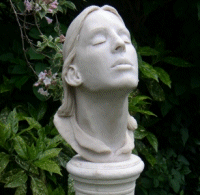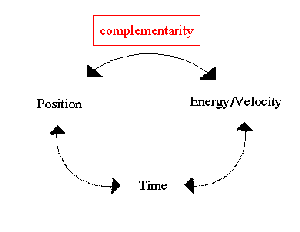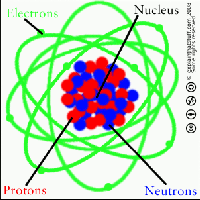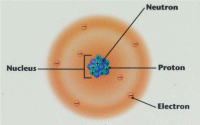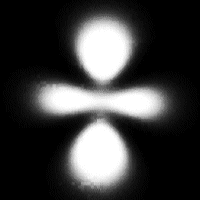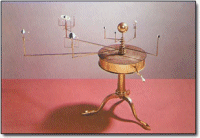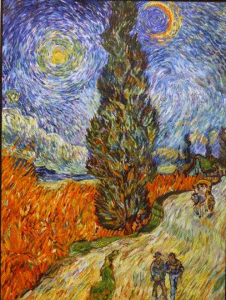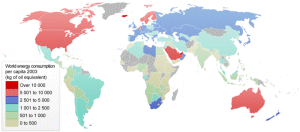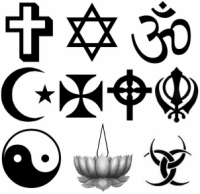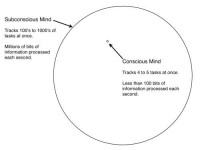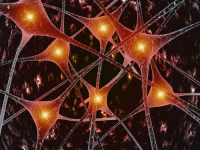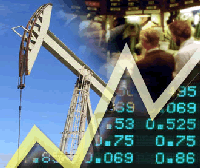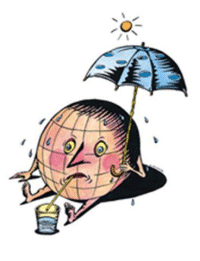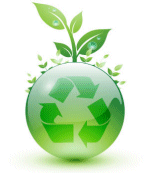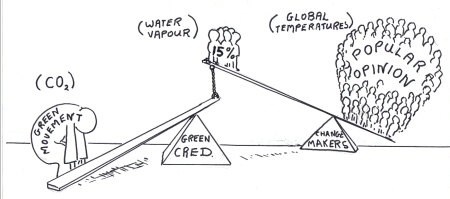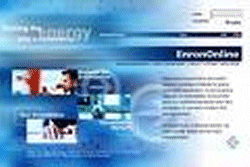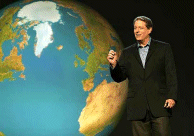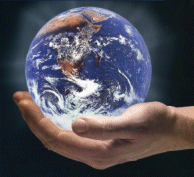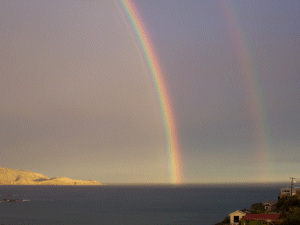|
|
The
Sustainability Principle of Energy This essay explores how our use of symbols can sustain us and destroy us. It suggests most inconvenient truths about our lives even as it points to how we can experience far greater joy, wonder and harmony with all.
|
||||||||||||||||||||||
|
Update Page The
|
|
Could it be that a
truer and more
joyous vision of reality exists than the current vision forming our
Anglo-American culture? Yes. Could
it be that the global Green Movement is the greatest threat to
humanity? Yes
This
article explores these two related questions and concludes we can say
yes to both with considerable confidence. First I discuss the great human capacity for self-deceit. I start with a
seeming diversion because I have first-hand knowledge that the insights
this article offers can be extremely traumatic to many well meaning and
caring folk. We can find it very distressing to suddenly realise a
favourite illusion is a dangerous delusion. In this case the shattering
of the Green Movement illusion might reveal a raft of new truths:
My hope is this
two-minute diversion will keep you mindful that all human beings share a
great capacity for self-deceit. It is the human condition. When we
acknowledge this capacity in a spirit of compassion we are liberated to
more enjoy life. Without a spirit of compassion we continue to condemn
others as we condemn ourselves. Without compassion we either deny the
possible insights of this article altogether or we catch glimmers of the insights
and our years are consumed by regret and anguish. This two-minute
diversion thus assumes great value against the possible context of so
many hours of needless misery. That special
twinkle in the Have you ever
enjoyed the privilege of being able to transcend the human ego and
observe human activity with some degree of equanimity and compassion? It
is not an easy thing to do because we are so used to thinking.
However all human beings are capable of enjoying this privileged
state. A few people develop this capacity to a high art. This is
evidenced in their writings, art, conversation, and often by the special
twinkle in their eye. I have seen this
special twinkle many times and often wondered what secret the person
knew that I did not. It was clear to me that they experienced something
I had not. I did know that these people often seemed to live wise lives,
have generous spirits and be fortified by an indomitable sense of humour.
How did they come by it? I have consistently observed one extraordinary phenomenon. This twinkle is most apparent amidst times of considerable suffering and seeming threat. They or those close to them may be in great pain from illness or injury and still this calm, kind twinkle endures.
Over the years I came to recognise the twinkle in the eyes of people like the Dalai Lama and I noted that the great psychologist, the Buddha, is often portrayed with the twinkle. I see and hear it in Leonard Cohen on occasion. As Bono says of Leonard in the tribute movie I’m Your Man, “A lot of writers have dared to walk up the edge of reason and stared into that great chasm, into the abyss,” Bono says. “Very few people have got there and kind of laughed out loud at what they saw.”
These people are
reported to have embraced suffering and mortality and still they smile.
What is the secret? Six decades of
experience, including that of suffering and some grief, have afforded me glimpses of
what enables them to smile. Probably the greatest insights have occurred
around my brief moments of meditation. During these occasions I have
observed the ingenious and very determined manner with which my mind
clings to the thinking process. I recommend a simple and profound exercise illustrating our mind’s capacity for denial. Concentrate for just two minutes on the sensations of upper lip caused by the movement of air with our breath. Unless you are
skilled in transcending the thought process I can almost certainly
guarantee that your mind will find some ingenious way to deny you this
experience. You will experience some thought that distracts you from the
complete experience of the sensations of your breath on your lip. This
humbling activity is extremely helpful to the understanding this article
in a state of compassion. It is perhaps essential. Now we can
respond to this intrusive behaviour of our minds with feelings of anger,
frustration, failure and disempowerment. Or we can respond with feelings
of gratitude and fine humour and say, “Very ingenious, mind, a very
clever distraction and thank you – this is not the time”. You will tend to find the former response simply reinforces the dominance of the mind by the thought processes. The thought process is not amenable to being denied and willed away. Indeed the paradox is that thought processes thrive in our active rejection of them. Our consequent sense of failure and frustration empowers the processes. We feel disempowered and trapped by the thought process. Responses of this type tend to become part of a cycle in which thought processes are reinforced at the expense of awareness of life. Reality is denied.
It is helpful to
know about these differing responses because they determine if and how
we are able to acknowledge and manage our great capacity for self-deceit in
general. Almost invariably
self-deceit is born of fear and greed of some sort. We have fears of
change (our mortality) and isolation. We are greedy for power, status
and material belongings. These unhelpful sensations evaporate when we
experience compassion for then we are able to identify with good humour
those of our illusions that are born of the worst self-deceit. We are thus
transformed and more able to live in harmony with reality. I can write
millions of words attempting to tell you how the experience of
compassion involves and enables the acceptance of unwanted thoughts and
delusions. I confine myself to saying that the experience of one moment
of compassion, one moment of kindness, one moment of good humour is
sufficient to communicate it all. In that moment one experiences the
capacity of human beings to transcend their ego, to embrace suffering
and thus be freed from it. In that moment we
catch a glimpse of the unhelpful illusions we labour under. In that
moment we realise this fantastic and funny capacity we each have to deny
reality. In that moment we are transformed into more sustainable beings.
Others will see this state in the special twinkle in our eye. And if some element in you says this transformation is impossible, then respond, “Yes it may well be impossible but so what? I have only my fears and self-deceit to lose if it turns out to be possible. Could even be fun.”
Guides
to the nature of reality. I continually
talk of reality. What is reality? I cannot provide an unequivocal answer
to this question. It may be that if we are part of reality then we can
never fully know what reality is. However I believe we have wise guides
as to the nature of reality. These include the Conservation and
Uncertainty Principles of Energy. The Conservation Principle of Energy is perhaps as near as we have to a law of existence. It suggests that the potential of the universes (there may by more than one) is so vast it can be considered a constant. This potential, manifest as energy, is so bounteous it can be neither created nor destroyed. It also suggests that while energy is usefully considered a constant it is continually transformed in myriad ways.
The universe at a large scale. Image
taken by the Hubble Space Telescope,
courtesy B. Mobasher ( The
Space Telescope Science Institute and The
European Space Agency) and NASA There is
overwhelming evidence in support of the Conservation Principle. It is as
near as we have to a natural law. Human
beings throughout millennia have subjected it to unparalleled scrutiny
and experiment, searching for ways to disprove it. The reason for this
intense testing of it is simple. If the Principle is true then it
implies we are transient forms, as are all other forms. We too live
trace lives and die. Our egos find
this reality difficult to accept and continually search for ways to deny
the fact we are mortal beings. We experience great difficulty
reconciling the paradox that we are separate trace elements of the great
potential even as we are part of it. We live a dance between a sense of
connection and a sense of disconnection, between a sense of integration
and belonging and a sense of alienation and longing. It may be helpful
to remind you that it is beyond the capacity of thought to truly
understand paradox.
[Latin paradoxum,
from Greek paradoxon,
from neuter sing. of paradoxos,
conflicting with expectation : para-, beyond; see para-1
+ doxa,
opinion (from dokein,
to think; see dek-
in Indo-European roots).] Paradox can only
be comprehended by our total being and we experience it as an essence of
life. That special twinkle in the eye expresses what words cannot –
transcendent comprehension and acceptance of the paradoxical nature of
our existence. The accepting individual, regardless of status or
education, is more able to fully live the reality that the Conservation
Principle of Energy describes. The Uncertainty Principle of Energy is also a very potent guide. It speaks of most dynamic universe(s) and our ever shifting perceptions of it. Most of us understand elements of its fundamental messages even though we might not realise it. We certainly experience much proof of its validity, for it has enabled transistor radios, televisions, computers, nuclear reactors and other paraphernalia of our society.
It too involves
much paradox. It suggests that we cannot be certain, for instance, of
both the velocity and the place of a particle simultaneously; that
particles can be quanta and continuous simultaneously; and that our act
of observation affects simultaneously the observed particle and other
particles in distant places in the universe. An essential
message is that we are each part of a flux of fantastic, dynamic change
and, whether we like it or not, we each have roles as stewards in this
change. This is the
reality I speak of. This is the reality we humans go to extraordinary
lengths to deny. Our sages with that twinkle in the eye may never have
heard of either the Conservation or Sustainability Principles but
somehow they have experienced the truths inherent in the principles.
They have realised that all our belief systems are illusions
and even delusions,
transient constructs of our thought processes. They understand how we
have the capacity to create most marvellous and sophisticated systems of
both acceptance and denial of change (our mortality) and our roles as
stewards (citizens). In many ways
change and stewardship are the same. When one accepts change is the
universal order one becomes part of all. In this state the individual
accepts that their decisions affect the flows and balances of change and
they embrace their roles as stewards amidst change. Every action is
experienced naturally as a moral act. This is why I
tend to write change/stewardship as a single symbol.
The constant and
ingenious endeavours of our minds at creating systems that enable us to
cling to illusions that deny change/stewardship begin to appear very
funny and absurd to the person who can observe them in a kind,
equanimous way.
To reiterate a
prime message of this article, we may respond with anger and betrayal to
our discovery that our cherished perceptions and beliefs are unhelpful
illusions, if not dangerous delusions. This will tend to make us
conclude life is a miserable fraud. We become filled with a sense of
failure and hopelessness. If, however our response to this discovery is
one of humour and compassion then we will tend conclude that our
ingenious attempts to deny reality are actually very funny. We are
filled with a sense of awe and wonder at existence. Hence we see the
twinkle of humour, respect and acceptance in the eyes of the people who
enjoy this compassionate response. Beliefs, illusions and delusionsImagine you are exploring the nature of atoms at the early part of the 20th Century. Newtonian physics has created a marvelous illusion that the velocity and place of a particle can be known at any time and all works to a divine order. If the atom is not the solid building block of matter then its parts are the solid building blocks. Then Rutherford shatters this illusion by showing that atoms are 99.9999% space. And the illusion is further demolished when the existence of electrons is discovered and it is realised that they are basically waves of probability, perhaps somehow linked to our consciousness. People like Heisenberg, prime generator of the Uncertainty Principle, wondered if
they were going insane. Everything they had ever learned had been a
delusion. They discovered the planet they lived on, the building they
inhabited, the chair they sat on and the bodies they lived in are nearly
entirely space. All that had seemed so concrete and solid suddenly
became a shimmering apparition, a faint ghost of itself, a thing of
ceaseless change. Suddenly their beliefs dissolved into illusions and
then delusions. Which was truer - the solid concrete object or the
shimmering apparition or neither or both? The seeming
weirdness of the insights of the Uncertainty Principle further shook
their sense of sanity. Their research indicated that a fusion of mind
and matter occurs, in which the observer becomes the participant in the
creation of the universe(s). Steeped in the belief systems of Newton and
Descartes it was easy for them to feel this new vision of reality was
delusional. Those that caught a glimpse of the implications for our
roles as stewards amidst the flux may have experienced a fearful sense
of responsibility for their activities. Even now many
people who spend all day manipulating the mathematics born of the
Uncertainty Principle cannot live it. They say that quantum theory is so
different to our daily experience that the two worlds cannot be
compared. They thus live in major denial of reality. Their lives
contrast with those who are able to embrace this reality of
change/stewardship, whether they be modern quantum physicists or the
Buddha sitting under the Bodhi tree. They tend to report experiences of
extraordinary coherence, integration and vitality. Similarly astrophysicists report similar experiences. The
Newtonian illusion of a “clockwork” universe that has always existed
gave way to an illusion of an exploding and imploding universe. This in
turn gave way to an illusion of a continually expanding universe
containing five times of this mysterious stuff called “dark matter”
or “invisible” matter as there is “ordinary” matter. In this
illusion of the universe even empty space contains large quantities of
“dark energy”. And again the
ancient illusion that there are many universes is being revived with
some modern physicists talking of “multiple
universes” and “parallel universes”. These were hypothesised
thousands of years ago by physicists. Many astrophysicists, like quantum physicists, form a fascinating phenomenon of denial. They can work all day with illusions of continual change and transformation in universes in which time, space and matter constantly change relative to each other. Many can come home and be quite unable to experience the same dynamic change and transformation in their kitchen table. Meanwhile a person who does not even know that particle accelerator and telescopes exist can be very alive in their awareness of the energetic transforming nature of their table and the universe generally. Think of the paintings of Van Gogh. In other words,
it is not what we know intellectually but rather the spirit of
generosity and openness of our being that enables us to enjoy a more
fulsome experience of reality. If we concur with
the dominant belief of our Anglo-American culture that science is a way
of thinking, the domain of those who have much knowledge about a
subject, then we tend to live in hopeless dissonance with reality. We
tend to deny and reject our roles as stewards amidst change in our daily
lives. Our use of technology is amoral and tends to put us at great
risk. If instead we
believe science is a state of being into which all human beings are born
because of our inherent capacity for compassion then we tend to live
lives vibrant in harmony with reality. We tend to accept and embrace our
roles as stewards amidst change in our daily lives. Our use of
technology is underpinned by a deep sense of morality and tends to
enhance our lives. The last three
paragraphs may seem a leap in logic and an unjustified statement until
we explore the statistics of our individual use of the resources of our
planet. The overwhelming
evidence is that those human beings who have all the knowledge that
money can buy tend to use it to form an elite that destroys the
resources on Earth at a rate that is so unsustainable rate there would
be an instant and cataclysmic collapse of our supporting ecology if all
humans adopted their behaviour. The
1 billion residents of high-income countries consumed more than 80% of
the global total. commons.wikimedia.org/wiki/File:Energy-consumption-per-capita-2003.png Included in this
elite are the modern self-styled
scientists” and
“environmentalists”. Many of their lives evidence a relative lack of
science compared to so-called “non scientists” i.e. the vast
majority of human beings. This leads to the
question, “How is this behaviour reflected in their use of key
symbols?” The power of symbols. We can explore the phenomenon of denial/acceptance of change/stewardship from another very revealing perspective – that of our symbol use.
Symbols are
paradoxical. A symbol is a crystallised quantum of information even as
it is continually transforming information. It is a package of meaning
in the moment that has the potential to transcend generations. A
sustainable symbol is always changing even as its central message is
unchanged. A symbol can be
in the form of a sound, light, smell and any other sense we can register
existence with. These words are symbols, as are the electronic pulses
that enable this communication. If you are reading this then initially
the words are in the form of light. However as soon as the brain
registers each of these light symbols it form associations with it that
all involve all our senses based on the totality of our life experience,
which includes our genetic inheritance. All sentient
beings, including Homo sapiens, use symbols to survive and procreate.
Every living cell uses them to communicate and without symbols there is
no civilisation. We exist because
our cells have managed to continuously retain the information necessary for life to
exist by continually transforming and adapting to all the incredible
array of events that occur over 3.5 billion years – all the solar
events, seismic events, atmospheric events etc. Equally species
and civilisations of humans have disappeared because they adopted
non-sustaining uses of symbols. There has been a
tendency this past few centuries by a group of societies, perhaps
symbolised as the “industrialised” societies, to believe that
symbols such as words and all manner of metaphors are not material.
There is a consensus in our Anglo-American culture that these types of
symbols are not “physical” and consequently it is concluded that we
need not be stewards of them in the same way we need to be stewards of
nuclear weapons or antibiotics or arsenic. We have the phenomenon of
individuals, NGOs and corporations arguing their use of our key symbols
is of little consequence even as they invest millions of dollars
promoting and imbedding their use of the symbols in the wider culture.
aunz.siemens.com/Energy/Pages/CC_2090_Energy.aspx
Important evidence is emerging from those who work at that point at which mind meets matter, at the point of interaction of human consciousness and atomic transformation. This research supports the notion that information is physical. This is a revolutionary concept in our culture for it completely alters our illusions of who and what a barbarian is. The amoral wordsmith may put us at greater risk than the bomb throwing “terrorist”.
A convergence of
illusions, first observed and recorded in historical record at least
2500 years ago, is occurring again. The illusion that the chair you are
sitting on is a solid object is tending to one that it is nearly all
space and probability. At the same time the illusion that symbols in the
form of words and other metaphors are ethereal is tending to one that
they are as physical, as material as the chair. We understand the
need to take care that our chair has firm legs and a strong back.
Powerful indicators suggest that we need take similar care that our use
of symbols accurately reflects reality. There is one
further thing I should add about symbols before we begin the next step
in this essay: the search for a guide to sustainable symbol use.
Our use of symbols reflects the state of our total being, including our primal being. In any moment we are conscious of only a trace few thousand of our being’s interactions with the universe(s). In that same moment we experience perhaps over 50 billion interactions.
Our symbol use reflects
the aggregate of all these billions of response. It thus allows us to
view the truer nature of this vast subconscious that determines so much
of our behaviour. Symbols are much
more potent than that though. They not only reflect our relative states
of harmony and dissonance. Their use also resonates in our psyches so
they can also generate these relative states of harmony and dissonance.
We do have a will. We can
use symbols with greater care if we choose to. We can choose to adopt
uses of symbols based on the wisdom of the great Principles of Energy.
At first these
uses may seem strange, awkward and inconvenient when they are different
to the popular uses in our culture. Indeed elements of denial of
change/stewardship within us may work to make us sound incoherent to our
own ears. Others may scorn and dismiss us. However with practice these
symbol uses will tend to resonate with the deep wisdom of our cells that
has sustained life for billions of years. Gradually we will be
transformed by that wisdom and become better able to live in harmony
with reality. Sustainable Uses of SymbolsPerhaps you gave
a couple of minutes to researching your psychology by observing the
sensations of your breath on your upper lip as suggested. You are now
mindful and smiling in your awareness of our ingenious capacity for
self-denial, particularly of our roles as stewards amidst change. What we need is a
tool that enables us to transcend our great capacity for self-deceit and
that provides a guide to the sustainable use of symbols. Such a tool would
detect whether a symbol use is underpinned by science. It would detect
whether the symbol use promotes harmony with reality (sanity) or
dissonance with reality (psychopathy and psychosis). It would act as a
measure of the efficiency of a symbol use similar to the way we measure
energy efficiency generally. Such an
exploration involves first establishing a sustainable frame of what
reality is and for the reasons I have given I have chosen the
Conservation and Uncertainty Principles of Energy as my guides. The vast
bulk of the evidence is that they are sustainable. They speak of a
reality in which energy is as bounteous as the universe(s), all is
change/transformation and humans have roles as stewards amidst this
universal flux. They also provide us with this corollary: if we are to
enjoy harmony with this reality then we each need work to conserve the
balances and flows that sustain us. Being mindful of
this reality we ask what does our symbol use indicate about the
sustainability of our culture? Let us assume there exists an additional
guiding principle that, for want of a better name, we call the
Sustainability Principle of Energy. This principle is derived from the
probable truths inherent in the Conservation and Uncertainty Principles
of Energy and the notions that information is physical and that humans
have powerful mirror neuron systems. A statement of the Sustainability Principle might be:
The
fundamental idea is that the
more we able to accept change and our roles as stewards within
change the greater the harmony we know with reality. The more we deny
change and our roles as stewards within change the greater the misery
and dissonance we know. This
insight is not new. Societies have gained and lost this wisdom
continuously for millennia. The use of the “mirror” symbol is deliberate. The human brain is laced with very sophisticated mirror neuron systems (see video) and in many ways we are Mirror Beings. It is this
capacity to mirror the universe(s) that enables us to experience
compassion and thus science and thus civilisation. It means we tend to
mirror the total lifestyles of others, not just the words they say. It
means our use of a symbol, such as a word or a drawing, evokes a whole
range of responses, most of them primal, based on the life experiences
of our audience. For instance our use of the “greenhouse” symbol
immediately evokes all the associations we and our audience may have had
of greenhouses – typically a sense of calm, control, human
engineering, transcendence of
place and seasons and, in many cases, of comfort. Now
let us assume that the existence of humanity depends on our sustainable
use of the resources of this planet. These resources include its
mineral, water, air, biomass and solar potential. These resources are
plentiful though limited. They are sustained because trace balances
exist among the great dynamic flux of change/transformation, which our
solar system. If we are to be sustained then our symbol use need work to
conserve these flows and balances. An inventory of the key symbols our Anglo-American culture uses to express our relationship with the resources of this planet would almost certainly include the following symbols: atmosphere Few would dispute, for instance, that the “power” and
“energy” symbols are extremely potent, being associated with the
vitality of the universe. The
inventory of symbol uses in These symbols can be used to reflect and generate either acceptance or denial of change/stewardship. Using the Sustainability Principle as my guide I have created a symbol use inventory . Here is a sample:
There is not space in this
essay to fully explain the implications of each symbol use for that
would require a separate essay for each symbol. I do provide elsewhere
more extensive draft rationale
of the acceptance and denial in a symbol use though this essay
is a more comprehensive and revised statement. An exploration of our culture’s popular use of these symbols using the inventory reveals a common pattern of behaviour. They reveal a coherent and consistent pattern of denial of change/stewardship in our Anglo American culture. They strip away our illusion that we are sane, caring people living in science. They confront us with the probability that we tend to be psychotic and psychopathic in our use of Earth’s resources. We find, for instance, that
our children learn to associate the “conservation” symbol with kindness and caring in our Junior/Primary schools. It is associated with valuing and conserving resources. The symbol is then adopted as a self-description by some of the most non-conservative people in the world, particularly Americans, and used as term of abuse by self-styled “liberals” “democrats” and “environmentalists”. We find the “energy” and “power” symbols are confused with the forms they can take and are associated with a few tradeable commodities such as fossil fuels and Bulk-generated electrical products. This is a complete denial of the Conservation Principle of Energy. We find
the potential of the “carbon” symbol is destroyed on scale by
universities, NGOs and corporations alike as they seek to use its power
to serve their narrow, short-term sector interests with “carbon
trading”, “carbon offsetting” “decarbonation” etc Similarly the process of warming is equated with the process of warming up,
which
is a complete denial of change in the form of the thermodynamics of the
universe(s). All
these symbol uses actively destroy the state of science in communities
and we find the “science” symbol itself is used in denial of
change/stewardship. And
thus we have the phenomena of, for instance, self styled “energy
experts” and “climate experts” travelling around the world calling
for change even as their symbol use denies the change they call for.
This is not the paradox it may seem. There is a simple explanation for
their confused and confusing behaviour, though it may be difficult for
some to accept. I trust you lived my introduction to know we are talking
about a universal human condition and can enjoy compassion for all,
including oneself. It
common to witness the phenomena of these “experts” expressing great
anguish and perplexity as they perceive they are not getting their
messages of stewardship and change across to their audience. The reality
is that they do communicate their message perfectly but it is not the
one they think it is. Their prime message is the dissonance they
experience between their words and their lifestyles. This is reflected
in their choice of symbol uses and the way they frame their discussion.
Their own dissonance is detected, reflected and generated at primal
levels in the psyches of their audience. The sustainability of our cultureI trust I have illustrated the power of symbols is sufficiently now. They are quanta of meaning that enable life to exist at every level. Our use of them reflects even as it generates our greater being, including our great subconscious. Similarly our aggregate use of symbols reflects and shapes the illusions of our culture. These in turn determine if and how nations conserve the resources of our planet. I
have discussed how our conscious acts as individuals are but a trace
element of our greater being. Just as a trace symbol reflects the
greater ocean of our being so to the trace conscious use of a symbol can
generate large changes within that ocean. So it is with our culture’s
use of symbols. Each
individual human being forms multiple symbols. These may be in the form
of their general life style, their clothing, their occupation, their
professed beliefs etc. Similarly every culture forms multiple symbols in
the form of political, religious, social, psychological, technological
and other structures. And just as time, space and matter vary relative to
each other so to does the power of every symbol use vary according to
the time, place and prestige of the user in their culture. We,
for instance, form consensuses about who are our symbols of expertise,
knowledge and wisdom. We then accord them enhanced influence in our
cultures. Their use of symbols takes on extra power and influence. A
judge who forms a consensus symbol of justice provides more power to a
symbol use pertaining to the law than does the layperson. In
other words, the power of a symbol use depends on the particular prestige
accorded the user. This is elementary Public Relations theory and it forms the
basis of all modern Greenwash and Banker Spin. And
so it can be with whole societal movements. Those groups accorded the
greatest prestige and reputation for caring for Earth’s resources may
well be the most psychotic and psychopathic.
For instance the greatest symbol we have for resource conservation is the international “Green Movement”. Search Google images with "green" and 16 of the 20 responses on the first page are associated with the green-care, the first icon being: The
Green Movement is a loose confederation of
NGOs, Government agencies, political parties, corporations, teachers,
preachers and other groups who champion the care and conservation of
Earth’s resources. A significant proportion of our Anglo-American population, perhaps
as much as 30% of people, see “green activists” as symbols of
stewardship and accord them prestige and status as experts in caring. Perhaps
half of this 30%, i.e. 15% of people, can be considered the “change
makers.” They care so
deeply to conserve the potential of our planet to sustain us that they
will actively modify their behaviour. They look for sustainable models
to guide them. They do not find these models in the oligarchy of bankers
that rule international commerce nor in the industrialists and
politicians who do their bidding. They tend to find guidance in the
Green Movement as to how to be effective stewards in change. The
role of this 15% is pivotal in the greater society, for they provide the
impetus for general change in behaviour and norms of conservation. In
turn the role of the Green Movement, a trace element of society, is
pivotal in promoting behavioural change in this crucial 15%. Thus the
combined leveraging power of the symbols used by each group on the other
is immense. They work together in much the same way that trace gases
such as carbon dioxide, ozone and water vapour in the atmosphere are
leveraged to enable life to be sustained on Earth.
We
are now realising that a small change in the ratio and balances of these
trace gases can make life unsustainable, such is their power. So it is
with the Green Movement’s use of the key symbols that it employs to
frame knowledge, to create our illusion of reality. If
the Movement’s uses of symbols enhance acceptance of
change/stewardship then our illusions tend to be in greater harmony with
reality. If its uses work to promote denial then our illusions will be
in discord with reality and thus tend to increase our dissonance and
misery. A
quick look through the inventory of symbol uses indicates that
the Green Movement is a prime agent of denial and can be considered very
psychotic. Indeed almost every example of symbols used in denial in the
inventory has been sourced from our most prominent and potent Green
groups – Greenpeace, Green Parties, WWF, Consumer protection groups,
EDF, prominent climatologists, “energy efficiency experts”, Environmental
Education resources, Government Environment Protection agencies… How
did the Green Movement become perhaps our most toxic force when the
majority of its members are very well meaning people who are ultra aware
of our need to conserve our global resources? The explanations are many
fold. We
may cling to the very lifestyles that we preach against. We
may crave power, recognition and acceptance by our peers. We
may attempt to deny our internal problems by attempting to blame the
world for our misery. Energy becomes the problem, not our use of energy.
Climate becomes the problem, not our use of the atmosphere. The
heightened awareness of “environmental activists” leaves them
particularly vulnerable to a sense of failure as they realise at some
primal level that they do not live what they preach. All
these factors can combine to resonate in symbol uses that reflect and
generate major denial of change/stewardship as the individual struggles
to suppress their essential sense of failure and hopelessness. Thus
their symbol uses fail to reflect reality and tend to work to destroy the hope
inherent in science. This
is the human condition. We each have a great capacity for denial of
change/stewardship. Without constant vigilance within compassion we very
easily become our own worst enemies. We each retain the seeds of
psychosis and psychopathy and these flourish in our state of denial. We
become vulnerable to becoming propagandists of greed-driven individuals and
corporations. Without
constant vigilance within compassion we end adopting the symbol uses of
the psychopathic corporations. “Green Movement” protests at the lack
of morality and sustainability of the corporations’ activities become
framed in ways that endorse the corporate ethos. It becomes a hopeless
paradox. The more passionate the green activist and the greater the
integrity of their data the more they work directly against their
expressed objectives. The more publicity and popular credence it gains
the more the Green Movement ends up promoting the unsustainable
activities of psychopathic corporations. The classic example is the Enron promotion of Carbon Trading through Bill Clinton and Al Gore at Kyoto. Enron was able to exploit them to achieve its real agenda. This was to ensure the value of the mineral gas reserves owned by the corporation was increased relative to the coal reserves of its competitors and, more importantly, to ensure that carbon became a tradeable commodity rather than a precious resource to be conserved using civic tax systems. Enron had already created the prototype global trading mechanism - -
by which it would clip the ticket on every carbon
trade. Enron’s real agenda was short-term profits and it was devoid of
care for our sustaining atmospheric balance. The truth is Al Gore became a powerful symbol of climate care even as he modelled and promoted the behaviour that destroys the climate balances that sustain us.
Thus the
movie, An Inconvenient Truth, became perhaps the ultimate
advertisement for cars, jet travel and Carbon Trading. The
Sustainability Principle of Energy indicates the film destroys science
on scale and is profoundly psychotic. The
Principle does not suggest Al consciously set out to create a
manipulative, devious movie. It does not deny his overt sense of well
meaning and care. It simply suggests Al Gore’s lifestyle is in deep
dissonance with his proclamations. It simply suggests that the reality
of Al is that he lives in a large mansion, constantly jets around the
globe and has vested interests in Carbon Trading businesses. This is the
model he is for his 6.7 fellow human beings. To the extent it resonates
with them then it becomes their aspiration too. Such is the power of
symbols and their impacts on energy flows and balances. I will conclude with a most humbling and funny experience I had a couple of years ago. For forty years I donated blood.
Towards the end of that
period I realised I had never actually watched the nurse inject the
needle into my arm vein. So this time I lay there and observed the
process. The nurse attempted to press the needle into my vein but could
not. Multiple attempts from
different angles all failed. She checked the needle. It was sharp. She
suggested the vein must be rather scarred and suggested we use my other
arm. Repeated attempts failed here too and the nurse was visibly shaken
and sweating now. “I have never experienced this in fourteen years,”
she said. I knew her as highly skilled and she had often she had taken
my blood with ease. At
this point something in me realised that perhaps I am not as fearless
and accepting of the blood donation procedure as I liked to think. I
glanced away and the needle slid in with ease.
I learned four things that day. Our capacity for self-deceit is
amazing. This deceit can take the form of a very powerful force of
physical resistance. The resistance can dissolve in a second. I am as
capable of self-deceit as any other human being. I
still find this experience both humbling and very funny. When I write of
the dissonance and denial propagated by the likes of Al Gore I do so with compassion.
Similarly when the Sustainability Principle of Energy indicates that the
global “Green Movement” may well be our greatest threat I accept
this possibility even though it is immensely inconvenient. If it be the
truth, so be it.
I hope you can be sustained as I am by the immense hope inherent in the Sustainability Principle of Energy. If you check down the symbol inventory for all the uses that reflect/generate acceptance of change/stewardship perhaps you to will catch glimpses of an inspiring and bounteous vision of existence.
It is this vision
of bounty that has made it
relatively easy for me to stop owning cars, flying jets, eating meat and
thus conserve our fossil fuel potential by a factor of about seven fold, all
this despite considerable alienation and punishment by New Zealand
society. (My window also overlooks
It
is this wondrous vision that sustains me even as I am dismissed and ridiculed by
our modern Environmental Educators when I tell them that the
Sustainability Principle indicates their vision of the moral order is
actually a dangerous delusion – rather than being our salvation the
Green Movement is currently the biggest threat to humanity. It is a net
destroyer of science in our communities. The Movement is the greatest
force promoting denial of change/stewardship and thus the greatest
source of misery. We are our own worst enemy. I
suggest that the inconvenience of this truth is far outweighed by the
kindness and joy experienced by those who embrace the Sustainability
Principle, for it is born of compassion. It can provide the experience
of great wonder, generosity, hope and harmony with all. Footnote:
For more joy, see the Compassionate Education Curriculum Framework.
|
|
||||||||||||||||||||

